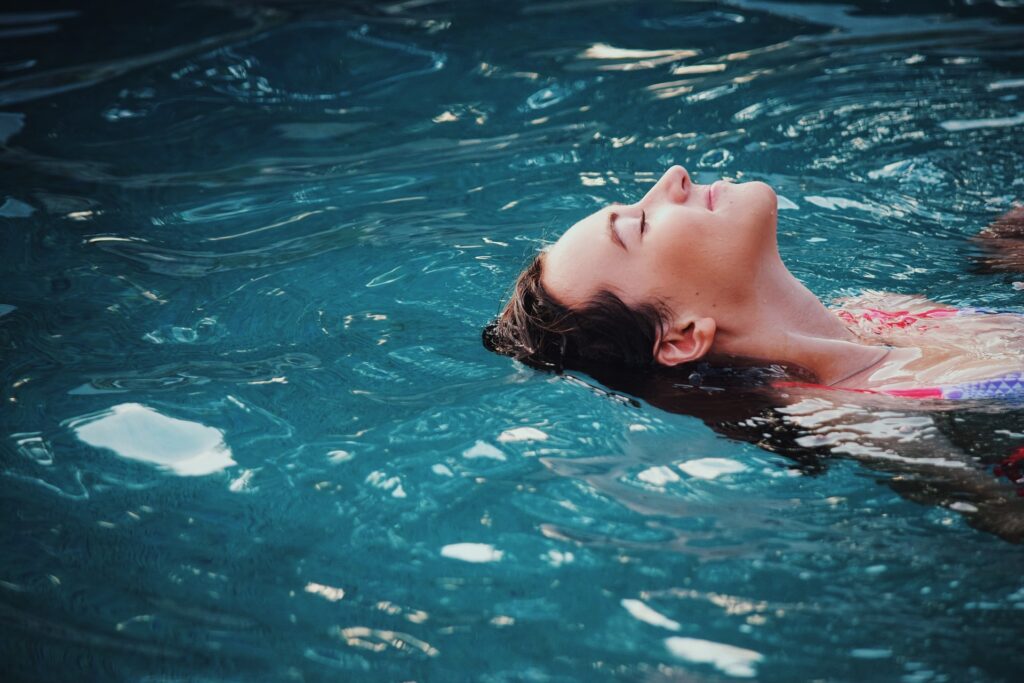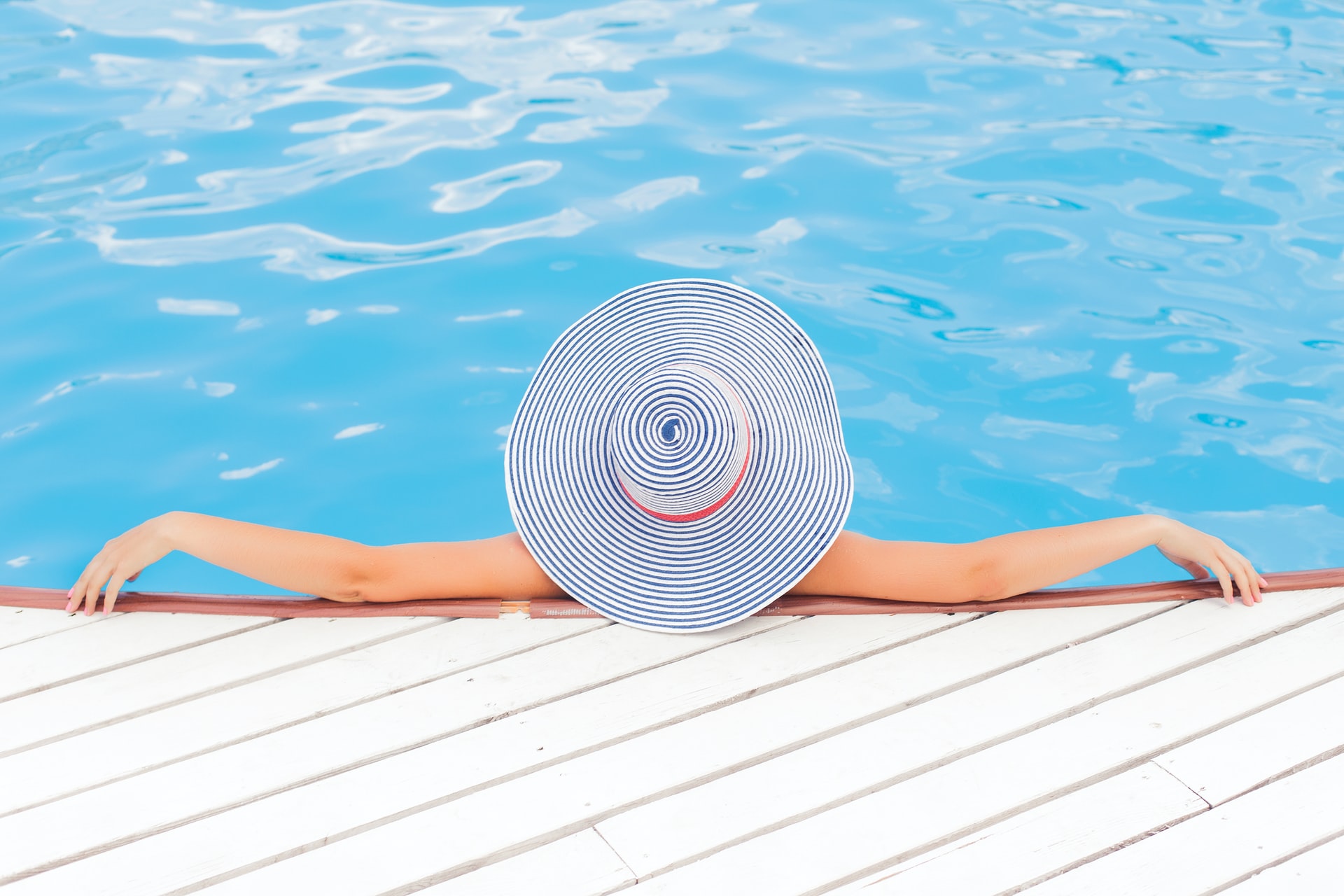How Long After Shock Can You Swim? Be Careful!
If you search the internet, you’ll get rough estimates ranging from “immediately” to “24 hours.” That’s because the REAL answer is: It depends. Don’t abandon the article just yet; we’ll get to the genuine answer in a minute.
You’ve undoubtedly heard that the optimum time to shock your pool is in the evening or at night, after the sun has set. That’s because shock acts like a vampire, sucking away your free accessible chlorine – the same thing you’re attempting to improve by adding shock to your pool.
So it’s simpler to just say, “shock at night and keep the filter running overnight; test the pool water before swimming in the morning.” But isn’t that not usually the case? Assume you’ve experienced (surprise!) “body waste.” For example, it’s 10 a.m. and baby Chloe’s swim diaper isn’t holding up as well as it should in the pool, and you’ve arranged an afternoon pool party. Oh, life is an adventure, isn’t it?
You must shock the pool throughout the day, but can you swim in it afterward? And how long must you wait until you can swim? Wait one hour for every pound of shock product applied before testing the water to ensure the pH and chlorine levels are within acceptable limits.
What is Pool Shock?
Pool shocking, also known as hyper chlorinating, is a cleaning procedure that includes adding three to five times the normal amount of chlorine to your pool water to keep it clean and safe. The chlorine level rises substantially in a short period of time. It is not a good idea to shock your pool on a frequent basis. Shocking your pool is necessary in specific circumstances, such as when it has been neglected or after a severe storm. If you have a saltwater generator and constantly monitor your chemical levels, you may not need to shock your pool as frequently.
How Long After Shock Can You Swim?
When it comes to shocking their pool, many pool owners have just one question. They want to know how long they will have to wait before they can swim again.
Unfortunately, pool specialists are divided on how long you should wait before swimming again. Despite the absence of universal agreement, we were able to discover numerous markers that helped us better understand whether it is acceptable to swim in the pool again after being shocked.
Because shocking a pool consumes more chlorine than usual, the water will take a bit longer to acclimate. As a result, it takes longer to swim after adding chlorine to a pool. Before selecting how long to wait, there are several aspects to consider.
These elements are as follows:
- What is the condition of your pool?
- Are there any algal blooms?
- Is it on the point of becoming a swamp?
- How bad is the stench?
Algal blooms in a pool might necessitate weeks of shock treatment. The longer the gap between shocks and swimming, the more serious the condition.
Unfortunately, because the amount of chlorine required to shock a pool varies depending on the circumstances, there is no specific answer for how long to wait after shocking a pool.
As soon as the free chlorine levels are steady and you can see what’s at the bottom of the swimming pool, you should be allowed to swim.
Another important tip to follow is to follow the manufacturer’s instructions on the back of the product. On the back of all chemicals, manufacturers often put cautionary statements and directions regarding disposal, storage, and how to utilize the item.
Types of Swiming Shock
Because different types of shock might impact how long you can swim after being shocked, the first thing to remember is to read the product’s box advice. This should show how long you should wait after shocking the pool with that specific type of pool shock before swimming.
Shocks caused by chlorine
Chlorine shocks come in two varieties: calcium hypochlorite (Cal-Hypo) and dichloroisocyanuric acid (Di-Chlor).
Cal-Hypo is the most widely used on the market. It is not only the cheapest, but also the most powerful. It decomposes in seconds and is normally done in a pre-filled jar before being added to the pool. Di-Chlor, on the other hand, is granular chlorine that has been stabilized. It takes longer to dissolve than Cal-Hypo, and the stabilizer raises the cyanuric acid level in your pool.
Shocks without chlorine
These are also referred to as oxidizing shocks. Instead of chlorine, they utilize oxygen to remove contaminants from the pool. After delivering this form of shock, you should be able to swim in as little as 20 minutes. Oxidizing shocks, on the other hand, will not destroy algae. Chlorine shock is required for this effect.
Testing the water after shocking
To establish if the water is safe, utilize test strips, liquid tests, or an electronic water tester. Before swimming may resume, free chlorine concentrations should be less than 5ppm, ideally less than 3ppm.
Allow the chlorine shock to remain in the water for at least 4 hours before testing it for the first time. You should leave the pool pump running after shocking.
Here are some more guidelines to remember while adding chemicals to your pool.
Adding Calcium Chloride
After adding calcium chloride to your swimming pool, wait for a full filter cycle or at least two to four hours.
Adding Clarifier, pH, and Alkalinity
When adding acids, bases, and clarifiers to balance the chemical composition of the pool, wait at least 20 minutes before using it.
Adding Muriatic Acid
To avoid skin irritation or burns, wait at least 30 minutes after adding muriatic acid to your pool.
Adding Floc
To keep the flocculant effective, do not swim in the pool after applying it. Allow it to settle to the pool’s bottom before vacuuming it up.
Adding Algaecide
You should wait at least 15 minutes after adding algaecide to the pool water before swimming.

Conclusion
If you need to add shock to your pool, it’s likely that something isn’t operating properly. Furthermore, there is a good likelihood that your molecules are out of balance. Attempting to repair your pool’s problems may wind up costing you a lot of money. It is advisable to leave it to the pros in this scenario.
